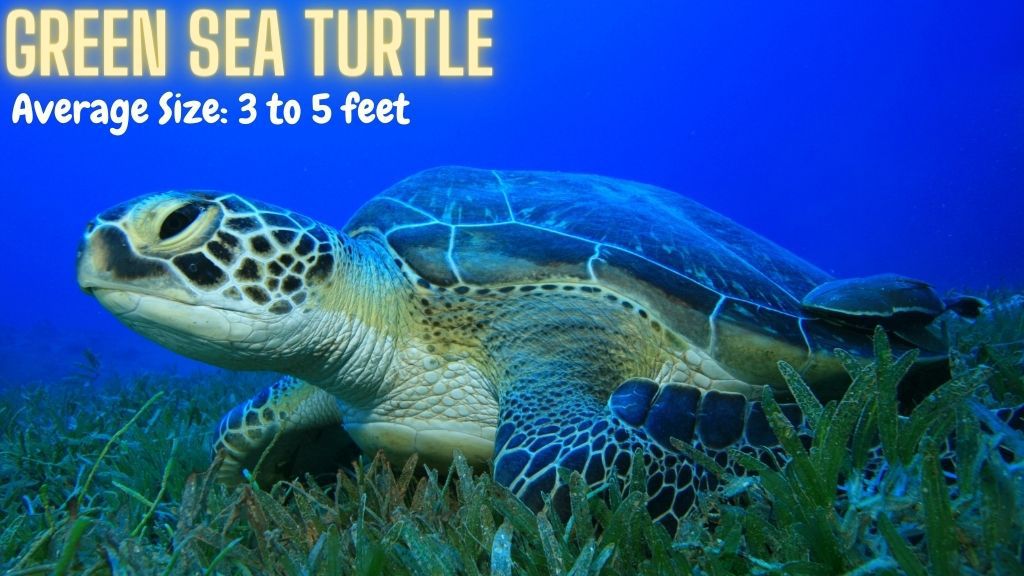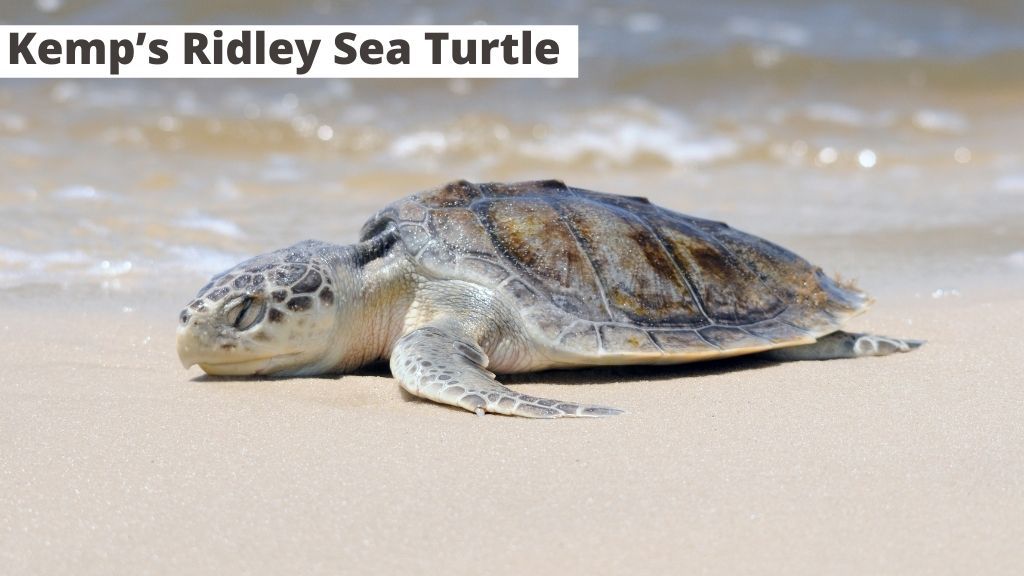Tags:
Where Do Different Sea Turtles Live?


fact checked & review by
Dr. Partho Kumar Shaha
Veterinarian (DVM)
The information is current and up-to-date in accordance with the latest veterinarian research.
If you have been to Hawaii, the chances are you have met a green sea turtle. I am not lying. You can spot sea turtles in many coastal areas and even snorkel with them. So, where do different sea turtles live?
Sea turtles prefer warm temperatures. So, their habitat centers around the tropical and subtropical waters of the Pacific, Indian, and Atlantic oceans. Depending on the subspecies, sea turtles are found in the USA, Mexico, Indonesia, India, Srilanka, and many other countries.
You will find detail on each sea turtle habitat and distribution in the following write-up.
Sea Turtles Habitat And Distribution
| Sea Turtle Subspecies | Habitat | Distribution |
|---|---|---|
| Green Sea Turtles | Coastal areas and reefs | Florida, Carolina, California to Peru |
| Loggerhead Sea Turtle | In tropical regions | Worldwide |
| Flatback Sea Turtle | Close to the shore | Mostly in Australian water |
| Leatherback Sea Turtle | Deep ocean | Throughout the Pacific, Atlantic, and Indian ocean |
| Kemp’s Ridley Sea Turtle | Shallow water coasts | Primarily in Gulf of Mexico |
| Olive Ridley Sea Turtle | Deep sea | Many unknown islands and reefs |
| Hawksbill Sea Turtle | Close to coastal shores | Throughout Pacific oceans |
Where Do Different Sea Turtles Live?
Sea turtles are found worldwide. Their native range and distribution depend on the weather, food source, and other factors. Generally, the habitats of these turtles vary from one subspecies to another. For example,

Green Sea Turtle
Green sea turtles are comfortable living in warm regions. As a result, these creatures set homes in tropical and subtropical waters. For example, the Atlantic, Pacific, and Indian oceans are suitable for green sea turtles. They are also seen in Coastal East Africa, Mesoamerican Reef, Coral Triangle, and Galapagos.
In short, warm coastal water with sandy beaches makes the perfect home for the green sea turtles.
The green sea turtle hatchlings start their life on the beach. They live on the shore for a few days and then go into the deep ocean. The young turtles are often found living in communities around the reefs and coral islands, where there are abundant food options.
As per the life cycle, the green sea turtles have to migrate during mating and nesting seasons. Their travel areas include Virginia Island, Florida, Hawaii, Georgia, Atlantic coast, North Carolina coast, South Carolina coast, etc. After successful mating and nesting, these turtles return to their natural habitats.

Loggerhead Sea Turtle
Like the green sea turtles, the loggerhead sea turtles are also found in warm coastal areas and other tropical and subtropical regions. As a result, the Atlantic, Indiana, Pacific, and Mediterranean seas make the best home for this subspecies.
The native habitat of the loggerhead turtles is widely distributed. For example, these turtles are found in the Eastern Pacific from Southern Chile to Northern Alaska. Similarly, in the Pacific, their home ranges from Newfoundland to Argentina. Besides these ranges, loggerhead sea turtles are also found in different coastal areas and islands of the USA.
The adult loggerhead sea turtles are known as extensive migrators. In the breeding season, these turtles travel 1000 miles searching for the perfect place.
The majority of the female gravid loggerhead sea turtles nest in Southern Japan, the USA, Australia, and Oman. In the USA, the wildlife and marine authorities made strict rules that discourage people from disturbing a nesting sea turtle.
The shores from North Carolina to Southeast Florida are safe for the nesting turtles. Moreover, you may also notice the loggerhead sea turtles nesting on the beaches of the west Gulf Coast of Mexico to Texas and northern Virginia.
Furthermore, in the western hemisphere, for example, in the Indian and Brevard river counties, the nesting community hub stretches from Melbourne to Wabasso Beach.
After the nesting season, the female turtles return to their foraging areas. Then, after a few months, the hatchlings come from the egg clutches. You may notice baby loggerhead sea turtles on different beaches during those months.

Flatback Sea Turtle
While other sea turtle subspecies have wide distribution, the habitat range is limited for the flatback sea turtles. These turtles are mostly found in the Northern Australia ocean. Besides, they are seen in the water of Southern Indonesia and Southern Papua New Guinea.
Also, flatback sea turtles do not travel miles for migration. Instead, they prefer living in their foraging area. However, these turtles will only come to the shoes during the nesting period. The major nesting hubs of flatback sea turtles are Crab Island, Queensland, Western Australia, and Northern Territory.
Unlike the other sea turtle species, flatback sea turtles do not explore the open sea. Instead, they live within 200 feet of the surface. Hence, spotting a flatback sea turtle in northern Australia water is nothing uncommon.

Leatherback Sea Turtle
Marine water bodies of the Northwest Atlantic, East Pacific, West Pacific, and Indian oceans are homes for the leatherback sea turtles. Foraging areas of these turtles are distributed throughout Nova Scotia, Canada, and many North American countries.
Leatherback sea turtles participate in community nesting. The largest nesting hubs are in Trinidad and Tobago, Gabon and West Indies (In the Northwest Atlantic), and Africa (In the southeast part of the Atlantic). These turtles may also nest on Carribian beaches, the coasts of Indonesia, Solomon Island, Papua New Guinea, the Pacific coast of Mexico, and Costa Rica.
In The USA, the shores of Florida, Puerto Rico, Hawaii, and Virginia Island witness large leatherback sea turtle nesting each year.
Leatherback sea turtles explore the deep and open sea when they are young. These turtles love preying on marine creatures. Also, the leatherback sea turtles travel miles to forage, mate, nest, and avoid cold.

Kemp’s Ridley Sea Turtle
The primary habitat of Kemp’s Ridley sea turtles is the Gulf of Mexico. However, these turtles also range as far as Nova Scotia and even eastern Atlantic waters. Besides, these turtles are found in USA Atlantic water. Therefore, their native habitat is far stretched from Florida to New England.
Kemp’s Ridley sea turtles are also spotted in different states and countries. Among them, Azero, Morocco, the Mediterranean sea, and areas around the Atlantic basin are notable.
In short, you will find Kemp’s Ridley sea turtle in the warm waters. Let it be north Caroline or Yucatan Peninsula. These turtles travel miles to forage and mate.
Kemp’s Ridley sea turtles live mostly in the Gulf of Mexico and nest around the beaches. In the USA, you will spot the nests on the shores of Florida, North Carolina, the Peninsula, and other coastal areas.

Olive Ridley Sea Turtle
Like all other sea turtles, Olive sea turtles also live in the tropical regions of the Indian, Pacific, and Atlantic oceans. Their habitat ranges from Southern California to Northern Chile in the Eastern Pacific.
Again, the distribution is stretched to Africa in the Pacific ocean. You will also find their presence in southern Mexico to Colombia. The Olive Ridley sea turtles are also spotted in India and Sri Lanka in great numbers because of the tropical temperature.
There are a limited number of Olive Ridley sea turtles in the USA waters. Sometimes they come foraging on the reefs and islands during the migration.
Olive Ridley sea turtles are open ocean species. It means they are found in the deep sea, unlike most other subspecies.

Hawksbill Sea Turtle
Hawksbill sea turtles spend their life migrating from one place to another. But they always select a habitat with coral reefs, rocky areas, shallow coastal regions, and lagoons. As sea turtles can not survive cold water, the Hawksbill sea turtles also live in tropical water regions.
In the USA, Hawksbill sea turtles are often spotted in Texas, Southern Florida, Puerto Rico, Virginia Island, etc. However, their distribution can be stretched as far as Brazil and many mangrove estuaries.
As I said, the Hawksbill sea turtles migrate from an early age. The juveniles travel to floating algal mats and drift lines and spend 5 years there. When adults, they settle at a reef coast or rocky mountain.
Though these turtles migrate a lot, they always stay close to civilization. As a result, Hawksbill sea turtles are often spotted on coastal beaches.
Conclusion
Sea turtles do not come to the surface unless they have to. You only spot a sea turtle on the shore when it is nesting or injured. For most of their lives, these creatures live in the sea and migrate to places in need of food, mating, or nesting.
Unfortunately, the population of sea turtles is declining because of manmade disasters. As turtle lovers, we must make the beaches and water safe for these turtles and preserve their numbers.

About Author
Muntaseer Rahman started keeping pet turtles back in 2013. He also owns the largest Turtle & Tortoise Facebook community in Bangladesh. These days he is mostly active on Facebook.
Disclaimer
This site is owned and operated by Muntaseer Rahman. TheTurtleHub.com is a participant in the Amazon Services LLC Associates Program, an affiliate advertising program designed to provide a means for sites to earn advertising fees by advertising and linking to Amazon.com. This site also participates in other affiliate programs and is compensated for referring traffic and business to these companies.
